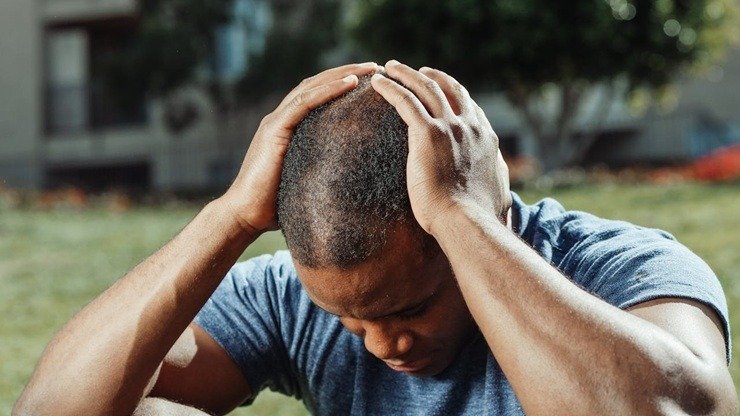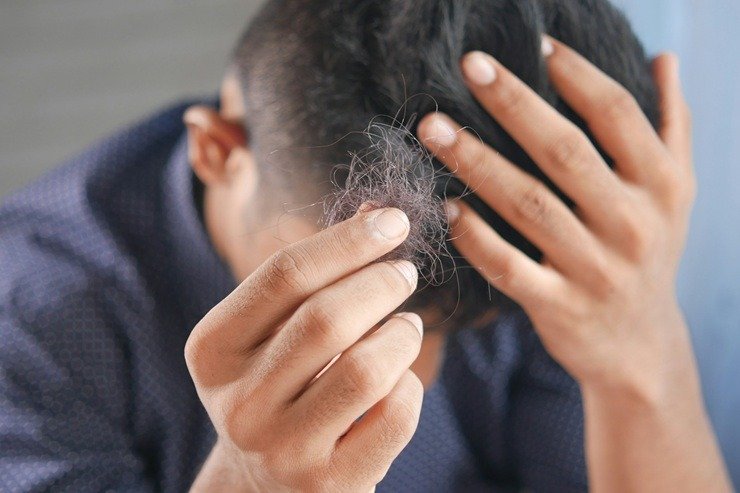Health
Early Signs of Hair Thinning and What You Can Do About It

Photo by Pexels
Thinning hair is often a natural part of aging and not always a cause for concern, but it can affect your confidence and self-esteem. Recognizing the early stages of hair loss empowers you to take proactive steps to retain and, in some cases, even regrow your natural hair.
Here’s everything you need to know about identifying, preventing, and reversing hair loss.
Learn to Recognize the Signs
Monitoring your hair ensures that you can take action as quickly as possible. While hair loss can happen rapidly, it’s often a gradual process, and detecting it in real time can be difficult. Keep an eye out for the following signs:
- Thinning: Thinning is when the hair becomes sparser and less dense than usual. It’s most common around the crown of the head.
- Shedding Hairs: You may notice an unusual amount of hair left on your pillow, in the shower, and/or on your hairbrush. Hair may become loose and easy to pull out.
- Receding Hairline: You may notice that your hairline is gradually moving toward the back of your head, typically starting around the temples. The hairline usually forms the shape of an M, V, or U, or it may manifest as a widening part.
- Bald Patches: You may have missing hair in certain areas. The patches are typically in the shape of a circle or oval.
- Textural Changes: Your hair may feel more brittle, weak, and/or thin.
- Sensitivity: Your scalp may feel painful, itchy, and/or irritated and have a pink or red appearance.
Identify Which Type of Hair Loss You’re Experiencing

Photo by Unsplash
There isn’t one specific cause of thinning hair, and it can happen to anyone. Here’s a brief look at the most common types of hair loss.
Androgenetic Alopecia (AGA):
AGA is the most common cause of permanent hair loss, affecting up to 80% of men and 50% of women. As we age, the risk of developing AGA increases. Research suggests that AGA is both hereditary and linked to hormonal imbalances.
Telogen Effluvium:
Telogen effluvium is usually temporary and often reversible. It can occur suddenly and be alarming. There are many possible triggers, including chronic stress, nutritional deficiencies, hormonal fluctuations, some medications, and rapid weight loss, among others.
Alopecia Areata (AA):
AA is an autoimmune disease that can affect hair anywhere on the body, though it most frequently causes patchy spots on the scalp. AA is quite common, affecting nearly 7 million people in the U.S. alone, with around 20% of cases involving children.
Traumatic Alopecia:
Traumatic alopecia is when damaged hair follicles prevent hair from growing properly. It can be caused by physical stress on hair follicles (traction alopecia), often related to excessively tight hairstyles and hats. It can also be caused by harsh hair products (chemical alopecia).
Scarring Alopecia:
Scarring alopecia occurs when hair follicles are damaged and scars form, preventing hair growth.
Identify the Root Cause
In some cases, the trigger for shedding hair is easy to identify. For example, someone who just started a new medication, went through significant emotional distress, or lost a significant amount of weight could reasonably assume they have telogen effluvium.
On the other hand, if there isn’t a clear cause, thinning hair could simply be a natural part of aging. The hair loss could be related to hormones, genetics, an undiagnosed health condition, or a myriad of other potential causes.
If you’re not sure why your hair is thinning, it’s best to consult with a healthcare professional. While hair loss can be harmless, it can also be the symptom of a more serious health problem.
How to Slow and Reverse Thinning Hair

Photo by Unsplash
It’s important to note that it’s not always possible to prevent or stop hair loss. However, many cases of thinning hair are temporary, avoidable, and reversible. A healthcare professional can provide personalized guidance. Here are some options to consider:
1. Make Lifestyle Changes
Even if thinning hair isn’t directly caused by a lifestyle factor like poor dietary or sleep habits, a healthy body is better equipped to grow healthy hair. Potential steps you can take include:
- Follow a balanced, nutritious diet.
- Exercise daily.
- Do hobbies and activities that soothe stress.
- Get 7-9 hours of quality sleep every night.
- Avoid anything that puts stress on your hair follicles.
- Talk to a healthcare professional if you think a certain medication is the cause.
- Stop unhealthy habits like smoking and consuming alcohol.
- Take supplements that support hair growth, such as biotin, zinc, iron, and vitamins A, B, and D.
2. Take a Medication That Supports Hair Growth
Some medications can support hair growth, but they’re not guaranteed to work. It’s important to choose the right medication for the specific type of hair loss you’re experiencing, so talk to a healthcare professional before starting a new treatment. Here are the most popular options:
Minoxidil
Minoxidil is most widely recognized under the Rogaine brand name, although it’s available from many other brands, too. It’s a topical medication that’s available over the counter.
Although research is ongoing, it’s believed that minoxidil enhances blood flow, allowing oxygen and nutrients to reach hair follicles more efficiently. It may also reduce the length of the hair’s resting phase and extend the length of its growth phase.
Finasteride
An oral medication available by prescription only, finasteride is most commonly prescribed to men who have androgenetic alopecia. It works by blocking an enzyme called 5-alpha reductase that converts testosterone into DHT, which is a hormone that can damage hair.
3. Try Low-Level Laser Therapy (LLLT)
Studies have shown that low-level laser therapy can be as effective as minoxidil and finasteride, but with the added advantage of being safe and not causing serious adverse side effects.
LLLT is an FDA-approved, non-invasive, science-backed treatment that has been used for over 50 years.
The basic idea is that hair follicles are exposed to gentle, low-intensity laser light, which can stimulate cellular activity, improve blood flow to the scalp, reduce inflammation, awaken dormant hair follicles, and extend the growth cycle.
Don’t Wait to Seek Solutions

Photo by Pexels
Thinning hair can be worrying, but the sooner you take action, the better your chances of regrowth will be. Remember that the majority of people will experience hair thinning in their lifetime. You’re not alone!
-

 Quotes3 years ago
Quotes3 years ago53 Motivational Gym Quotes to Fuel Your Workout
-

 Quotes10 years ago
Quotes10 years ago50 Most Powerful Quotes Ever Spoken
-

 Motivation5 years ago
Motivation5 years ago4 Fun New Hobbies To Try This Year
-

 Quotes2 years ago
Quotes2 years ago43 Inspirational Quotes About Thoughts
-

 Quotes12 months ago
Quotes12 months ago100 Motivational Quotes to Inspire You in 2025
-

 Quotes3 years ago
Quotes3 years ago105 Motivational Quotes by Famous People
-

 Quotes1 year ago
Quotes1 year ago77 Morning Motivational Quotes to Kickstart Your Day
-

 Education11 months ago
Education11 months agoHow to Motivate Yourself to Study: 6 Proven Techniques































